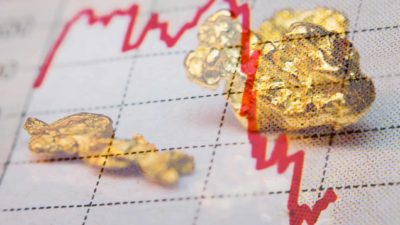ASX gold shares could be a way for investors to protect their portfolios from the dangers of inflation and market volatility.
We've seen plenty of market pain over the last year and a half as the market digested the impact of strong inflation and higher interest rates. These have been wielded in a bid to dampen economic demand in Australia and other countries.
Yet, gold has a somewhat unique position in the ASX mining share sector. It has been used by societies for thousands of years as a store of wealth.
There are a few different ways to invest in gold on the ASX, including ASX mining shares such as Northern Star Resources Ltd (ASX: NST) and Evolution Mining Ltd (ASX: EVN). There are also gold ETFs including Global X Physical Gold ETF (ASX: GOLD) and BetaShares Gold Bullion ETF – Currency Hedged (ASX: QAU).
Certainly, there are a couple of great reasons to like gold.
Inflation protection
Over the ultra-long term, it's thought that the gold price generally keeps up with inflation, so it could be a good inflation hedge, as Reuters research shows.
Its performance as an inflation hedge over the last couple of years during this period of elevated inflation has been patchy, but overall it has held up well.
In fact, according to exchange-traded fund (ETF) provider Global X, the gold price may rise because inflation figures have "eased significantly" in the US. The Federal Reserve now has "more flexibility with possible rate pauses in the near future, giving non-yielding assets room to breathe and rise in value".
Volatility hedge
For some reason, investors have decided that when the share market goes down, the gold price (usually) goes up.
Indeed, it sounds wise to have a position in one's portfolio that can rise as many other parts of the portfolio go down.
That sort of investment could give an investor peace of mind during bear markets.
It could also enable people to employ a strategy of selling their ASX gold shares when they have gone up (or not gone down as much as the market) during a crash, and buying other ASX shares when they have dropped.
But there's also one big reason not to buy a lot (or any) gold assets.
Little compounding potential
Gold has managed to display some positives, as I've already talked about.
But growth at the rate of inflation is not exactly shooting the lights out. The share market has delivered an average return per annum of around 10% per annum, much better than inflation.
However, gold doesn't do anything. It doesn't generate interest, rent, or profit and there's no re-investment potential. Gold just sits there being shiny.
Owning gold can be a decent short-term hedge against volatility, but there's a danger of trying to time the market. And it's not as though the market is crashing all the time.
There's an argument to say that gold miners could offer the potential returns of a growing miner — if we invest at the right price — though that comes with mining risks as well.
Overall, I'd say gold could play a small part in a portfolio as a volatility hedge and then switch that capital to appealing sold-off ASX shares. But, I think it makes less sense to own gold consistently for the ultra-long term or to make it a large part of the portfolio.









